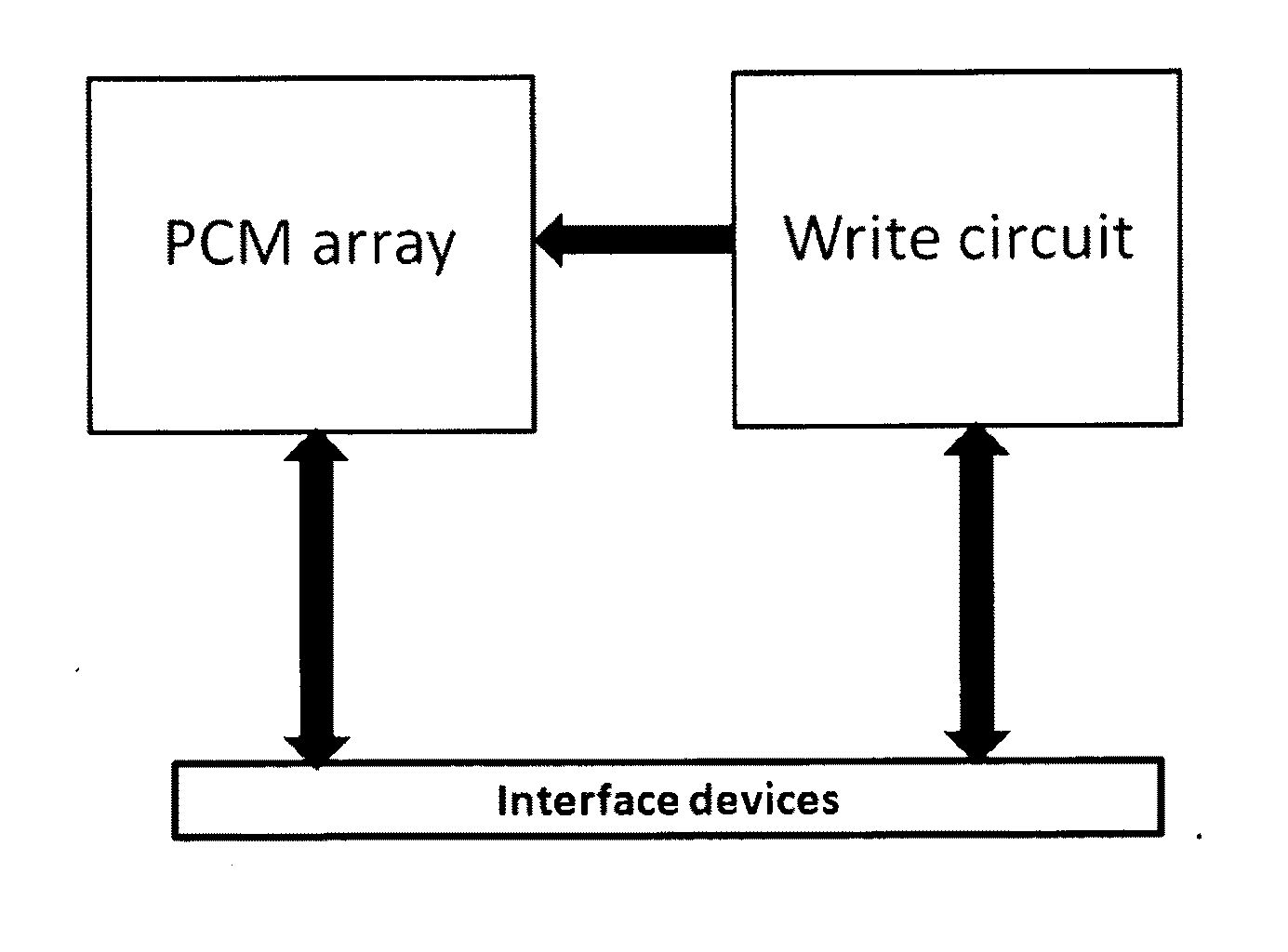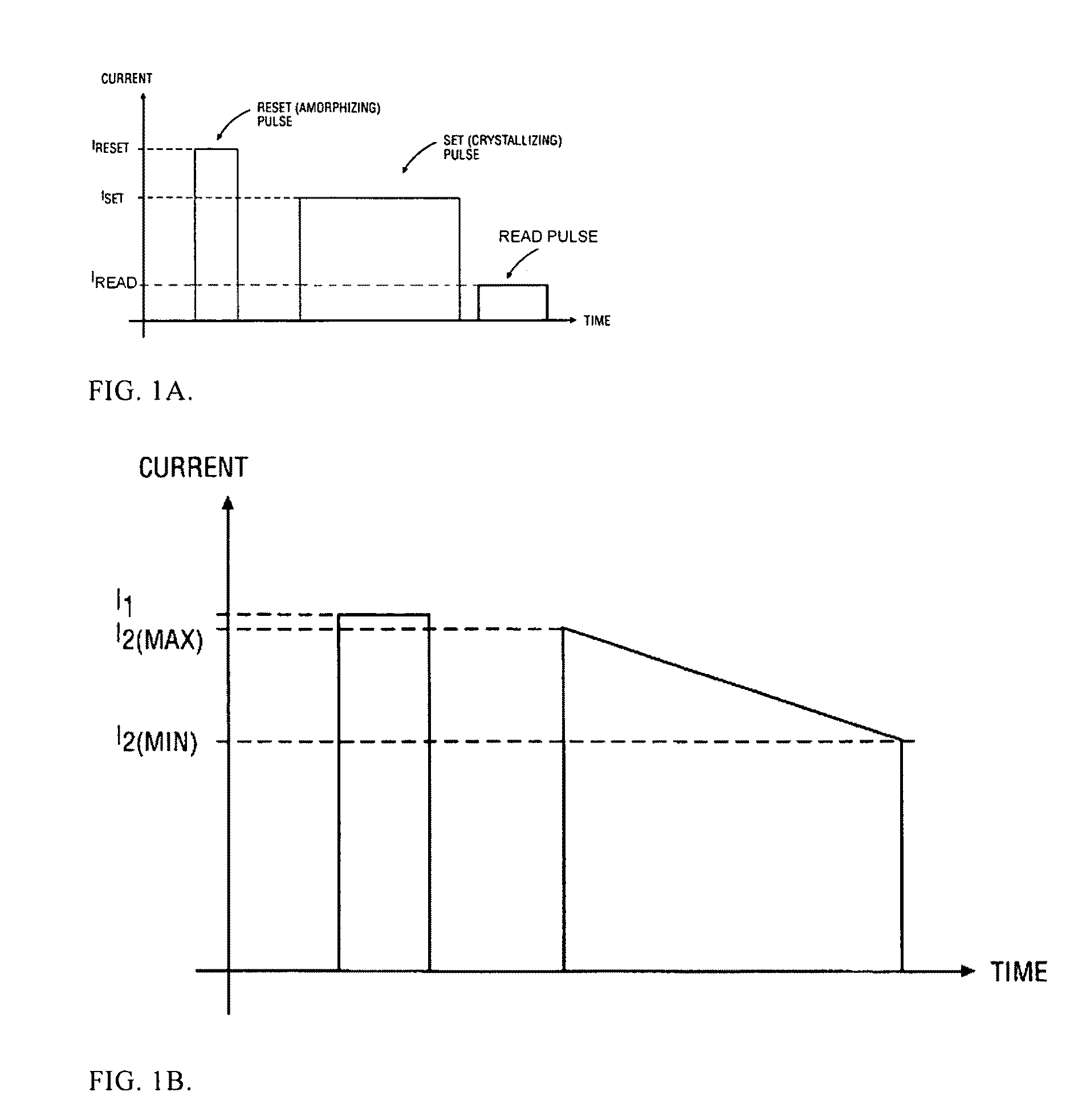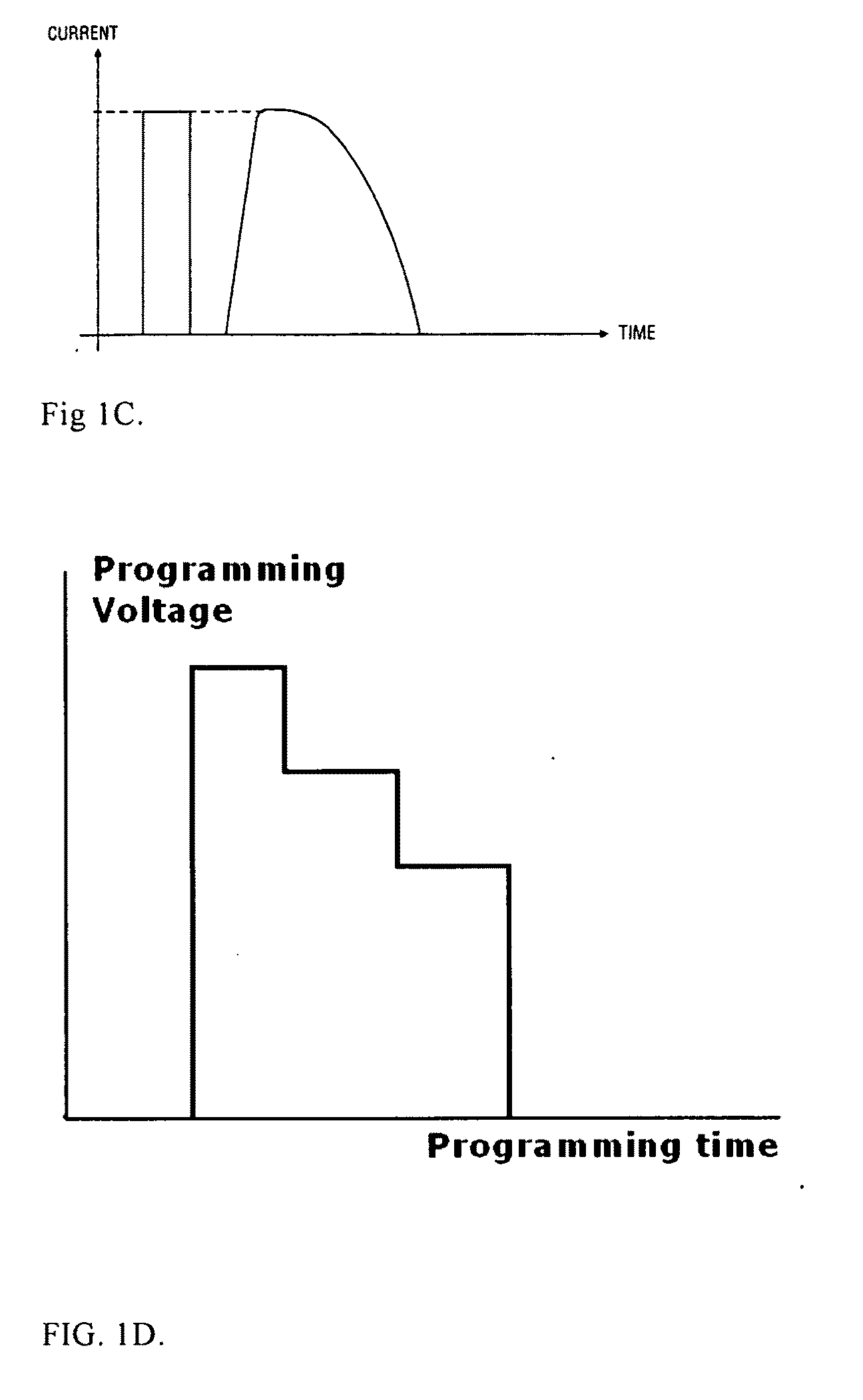Programming methods for phase-change memory
a phase-change memory and programming method technology, applied in the field of phase-change memory, can solve the problems of low endurance of such pcm cells, inability to program all cells in big arrays with the same pulse, etc., to achieve the effect of small energy consumption and without deterioration of enduran
- Summary
- Abstract
- Description
- Claims
- Application Information
AI Technical Summary
Benefits of technology
Problems solved by technology
Method used
Image
Examples
Embodiment Construction
[0056]PCM Programming.
[0057]PCM can be programmed to low resistance (set, mostly crystalline) state and to high resistance (reset, mostly amorphous) state due to structural transformation in PCA as shown in the FIG. 3A. Transition from the set state to the reset state occurs due to PCA melting and fast quenching. Transition from the reset state to the set state occurs due to PCA nucleation and crystallization which are strongly depend on the temperature as shown in FIG. 3B.
[0058]SET State.
[0059]The programming from reset (amorphous) state to set state by electrical pulses includes threshold switching event that occurs in modern PCM at voltages between 0.3V and 10V and currents between 0.1 uA and 250 uA. The value and the uncertainty of threshold switching voltage in PCA depend on the rate of applied signal. The current through PCM immediately after the threshold switching depends on actual threshold switching voltage value and load line for the PCM in an array. During and after the ...
PUM
| Property | Measurement | Unit |
|---|---|---|
| currents | aaaaa | aaaaa |
| currents | aaaaa | aaaaa |
| voltages | aaaaa | aaaaa |
Abstract
Description
Claims
Application Information
 Login to View More
Login to View More - R&D
- Intellectual Property
- Life Sciences
- Materials
- Tech Scout
- Unparalleled Data Quality
- Higher Quality Content
- 60% Fewer Hallucinations
Browse by: Latest US Patents, China's latest patents, Technical Efficacy Thesaurus, Application Domain, Technology Topic, Popular Technical Reports.
© 2025 PatSnap. All rights reserved.Legal|Privacy policy|Modern Slavery Act Transparency Statement|Sitemap|About US| Contact US: help@patsnap.com



